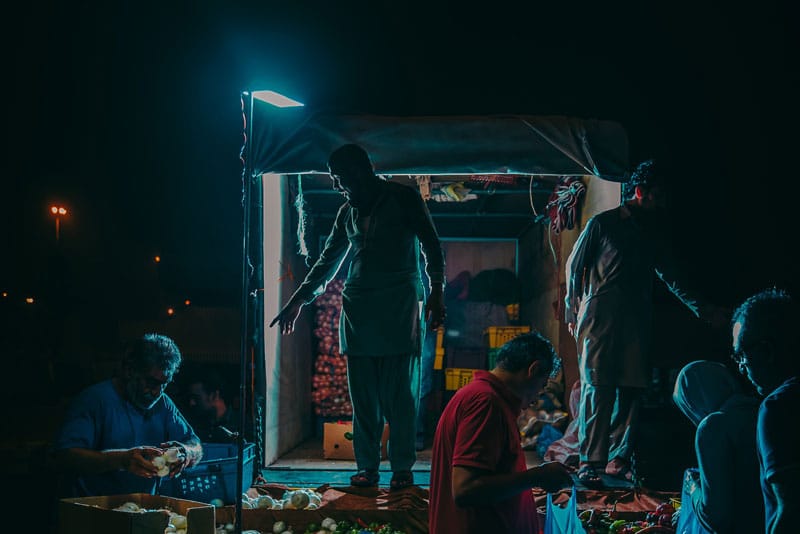hu•man traf•fick•ing
Learn More With Justice U™Take the free Human Trafficking Awareness online course
Take the Course
Justice U™ is an initiative of the AFRJ®
United States FocusKey Vulnerabilities In The United States
Human trafficking is very often the end result of years – sometimes generations – of vulnerabilities that have gone unnoticed, unaddressed, or un-resourced. A victim of human trafficking has often experienced compounding vulnerabilities, including but not limited to: trauma, abuse, neglect, violence, family breakdown, homelessness, poverty, or a combination of these and other factors.
Traffickers exploit vulnerabilities
Traffickers exploit these vulnerabilities by luring victims with false promises of a better life – offering a sense of relationship or belonging, a better job or income, a chance for a new life in a new place, or similar lies – through which a vulnerable individual can easily fall victim to exploitation. While there is no one face of a human trafficking victim, certain populations are more vulnerable.
Vulnerability No. 1
Minors In The Child Welfare System
Minors are significantly more likely to be trafficked than their peers who have had no contact with the child welfare system.
A 2007 study of 2,250 child victims of trafficking revealed that 75% of the children had previous contact with the child welfare system, mostly in the context of abuse and neglect proceedings (Feldman, 2007).1
In 2013, 60% of the children rescued in a nationwide raid led by the FBI in over 70 cities were from foster care or group homes (NPR, 2013).2
70-90% of commercially sexually exploited youth have a history of child sexual abuse (Bagley & Young, 2007).3
In 2012, Connecticut reported 88 child victims of sex trafficking. Eighty-six were child welfare involved, and most reported abuse while in foster care or residential placement.4
In Alameda County, California, a one-year review of local CSEC victim populations found that 55% were from foster youth group homes, and 82% had previously run away from home multiple times.5
Vulnerability No. 2
Homeless & Runaway Youth
Runaway or homeless youth may be compelled to exchange sex for basic survival necessities, such as food, shelter, or protection.
At least one in three homeless youth engage in survival sex (exchange of a sexual service for food, clothing, shelter, or protection).7
According to Covenant House, “Shelter was the number one commodity traded in return for sexual activity. Of those who engaged in commercial sex activity, almost half (of youth) – 48% in total – said they did it because they did not have a place to stay. Participants (in the Covenant House Research) explained how traffickers loiter in areas where homeless youth are known to gather and then tell them that the shelters are full and offer them a place to stay in lieu of sleeping on the streets.”8
162,000 homeless youth are estimated to be victims of commercial sexual exploitation in the United States.9
Youth living on their own are at a higher risk for anxiety disorders, depression, posttraumatic stress disorder (PTSD), suicide attempts, and other health problems due to the enhanced exposure to violence.11 Each of these factors increases the youth’s vulnerability to traffickers.
What does human trafficking look like? While there is no one face of a human trafficking victim, certain populations are more vulnerable.
Vulnerability No. 3
Foreign Nationals
Foreign nationals, including migrant and seasonal farmworkers, restaurant workers, and domestic servants, are vulnerable to human trafficking and exploitation.
Victims of labor trafficking have been found among our nation’s migrant and seasonal farmworkers, restaurant workers, and as domestic servants. These populations include men, women, families, or children as young as 5 years old who harvest crops and raise animals in fields, or work in packing plants, nurseries/orchards, and kitchens.12 Foreign nationals are at an increased risk for human trafficking for many reasons. They are more likely to face legal restrictions on work and travel related to their visas. They are also more likely to have a language barrier, and they are more likely to be unfamiliar with the area they are living in including: geographic layout, resources available, and legal protections regarding labor.

Migrant and Seasonal Workers
Migrant and seasonal workers are at an enhanced risk. “These victims often face threats workers with arrest and deportation, even workers who have the legal right to work in the U.S.”13 Additionally, seasonal work in the hospitality industry may also be at risk for exploitation. Undocumented workers are especially vulnerable, because they are less likely to report being the victim of a crime.
Businesses Posing as Legitimate Operations
Foreign nationals may also be victims of sex trafficking. Massage parlors, strip clubs, nail salons, and other businesses may pose as legitimate business, but actually be run by human traffickers. “Victims in these establishments are primarily controlled through debt, blackmail, and intense psychological manipulation. Almost every aspect of their life is controlled — where they live, what they eat, where they go, what they look like, and who they are allowed to talk to.”14

Vulnerability No. 4
Individuals with a History of Trauma or Abuse
Intimate partner violence, domestic violence, incest, psychological or emotional abuse and neglect, and other forms of trauma and violence can make a person more vulnerable to human trafficking. Often, individuals are not able or not yet willing to seek treatment for their previous abuse. People, especially children and youth, are less resilient after experiencing trauma and more likely to be persuaded or tricked by others who would take advantage of emotional instability, low self-esteem, physical injury, a missing support system, and an intensified need to be accepted by peers or stand-ins for family members.15
Learn More
Human Trafficking 101 Series Blog
Unearth important details and common misconceptions about human trafficking: where it occurs, who it affects, who are its most-likely victims in our Human Trafficking 101 blog series.
Engage Together® Tookits
Discover how you are uniquely positioned to end human trafficking with details and insights based on exactly who and where you are with an Engage Together® role-based resources.
More Resources
Explore the following resources to learn more:
- Department of Homeland Security Blue Campaign
- United Nations Office on Drugs and Crime
- Polaris Project
- National Human Trafficking Hotline
- Department of Justice Trafficking in Persons Report
- Office for Victims of Crime
- Department of Labor
- Childwelfare.gov
- Shared Hope
- National Center for Missing and Exploited Children
- Safe Supportive Learning
Footnotes
1. Feldman, Cassi. “Report Finds 2000 of State’s Children are Sexually Exploited, Many in New York City” NEW YORK TIMES April 24, 2007. Available at http://www.nytimes.com/2007/04/24/nyregion/24child.html?_r=2&oref=slogin
2. “Finding and Stopping Child Sex Trafficking.” NPR, August 1, 2013. Available at http://www.npr.org/templates/story/story.php?storyId=207901614
3. Bagley, C. & Young, L. (2007) Juvenile Prostitution and Child Sexual Abuse: A Controlled Study. Canadian Journal of Community Mental Health.
4. http://www.rights4girls.org/current-campaign/uploads/child%20welfare%20and%20child%20trafficking.pdf
5. http://www.rights4girls.org/current-campaign/uploads/child%20welfare%20and%20child%20trafficking.pdf
6. https://traffickingresourcecenter.org/what-human-trafficking/human-trafficking/victims
7. Ray, N. (2006). Lesbian, gay, bisexual and transgender youth: An epidemic of homelessness. New York: National Gay and Lesbian Task Force Policy Institute and the National Coalition for the Homeless.
8. Covenant House Homelessness, Survival Sex and Human Trafficking: As Experienced by the Youth of Covenant House New York https://d28whvbyjonrpc.cloudfront.net/s3fs-public/attachments/Covenant-House-trafficking-study.pdf
9. Estes, Richard J. and Neil Alan Weiner, “The Commercial Sexual Exploitation of Children In the U. S., Canada and Mexico,” University of Pennsylvania, Philadelphia, 2001
10. Congressional Research Service “Sex Trafficking of Children in the United States: Overview and Issues for Congress” https://www.fas.org/sgp/crs/misc/R41878.pdf
11. National Coalition for the Homeless. (2006). NCH Fact Sheet #13: Homeless Youth. Retrieved July 20, 2007 from http://www.nationalhomeless.org/publications/facts/youth.pdf
12. https://traffickingresourcecenter.org/labor-trafficking-venuesindustries/agriculture
13. https://traffickingresourcecenter.org/labor-trafficking-venuesindustries/agriculture
15. National Center for Domestic Violence and Trauma http://www.nationalcenterdvtraumamh.org/wp-content/uploads/2012/04/Multiple-Layers-of-Trauma.pdf
Stay informed. Get involved.
Subscribe to our emails to discover how to connect with others and engage strategically to eradicate human trafficking and protect the vulnerable.
